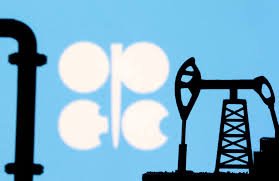In a significant development for global energy markets, oil output from the Organization of the Petroleum Exporting Countries (OPEC) witnessed an increase in June, primarily driven by production hikes from Saudi Arabia and the United Arab Emirates. The latest findings shed light on how key Gulf producers are steering the market amid shifting global energy dynamics and regional economic ambitions.
A Resilient Energy Move in a Changing Global Landscape
The global oil landscape has been anything but predictable in recent years. From pandemic-triggered demand collapses to geopolitical disruptions and energy transition debates, the oil market has navigated intense volatility. Against this backdrop, OPEC’s June production boost signals not only a coordinated strategy by its heavyweight members but also a reflection of regional resilience.

The recent survey revealed that the 12-member OPEC bloc collectively raised output in June, marking one of the more noticeable monthly increases of the year. This adjustment comes at a time when market players are closely watching for signs of supply and demand shifts, and how major producers intend to balance market stability with national economic goals.
Saudi Arabia’s Strategic Production Play

Saudi Arabia, OPEC’s de facto leader and the world’s largest crude oil exporter, took the lead in June’s production surge. The kingdom increased its output, a move seen by many analysts as both a market management decision and a strategic economic necessity.
For Riyadh, energy remains the backbone of its economy, even as it accelerates its Vision 2030 diversification program. Higher production volumes not only help stabilize government revenues but also reinforce Saudi Arabia’s pivotal role in maintaining global oil market balance.
In recent months, Saudi Arabia had voluntarily cut production to support prices amidst fluctuating demand. However, June’s output rise suggests a tactical easing of those cuts, likely timed to coincide with growing summer fuel demand and the approaching high-travel season in several parts of the world.
UAE’s Ambitious Expansion Strategy Shines Through
Right alongside Saudi Arabia, the United Arab Emirates also registered a noticeable increase in oil production during June. The UAE has been steadily expanding its oil production capacity, positioning itself as one of the most dynamic energy players in the region.
Abu Dhabi’s long-term energy strategy involves not only boosting production capabilities but also investing heavily in downstream industries and renewable energy projects. However, oil remains a vital revenue stream for the country, and adjusting production levels allows the UAE to respond agilely to market trends while supporting its broader economic growth goals.
The June production boost reflects the UAE’s balancing act between sustaining its economic momentum and upholding commitments to OPEC’s collective decisions. The country has consistently emphasized its readiness to adjust production in line with market needs, and this latest move is a testament to that pledge.

Market Reaction and Price Dynamics
Following news of the production increase, global oil prices exhibited minor fluctuations as traders and analysts absorbed the implications. While higher output typically exerts downward pressure on prices, the market’s reaction was measured, indicating an underlying confidence that demand levels remain robust enough to absorb the additional supply.
Summer months often see a rise in fuel consumption, especially in the Northern Hemisphere. Travel, transport, and industrial activities tend to peak, prompting higher crude oil demand. This seasonal uptick likely factored into OPEC’s decision to modestly boost output, ensuring market equilibrium while safeguarding member state revenues.
The oil market has also become increasingly influenced by broader economic indicators, including inflation trends, interest rate decisions by central banks, and geopolitical events. In this context, OPEC’s June adjustment is being interpreted as a pragmatic, well-timed move rather than a disruptive market intervention.
Balancing Act Between Market Stability and Economic Growth
One of OPEC’s enduring challenges has been maintaining a delicate balance between preventing oversupply-induced price crashes and avoiding market tightness that could stifle global economic growth. The June production hike demonstrates the group’s ongoing commitment to this balancing act.
For member countries like Saudi Arabia and the UAE, economic diversification remains a national priority. Both nations have embarked on ambitious programs to reduce their reliance on hydrocarbons by investing in tourism, infrastructure, technology, and renewable energy. However, oil revenues continue to fund these initiatives, making strategic production decisions crucial to their fiscal stability.
The ability of these countries to fine-tune their output levels in response to market signals speaks to their growing sophistication in energy diplomacy and market management. It also highlights their desire to remain reliable energy partners for the global economy while advancing their national interests.
Broader Implications for Global Energy Markets
The latest OPEC production figures arrive at a pivotal moment for the global energy sector. Debates around energy transition, sustainability, and the future of hydrocarbons are intensifying, with governments and industries navigating complex paths towards net-zero ambitions.
Yet, oil remains a cornerstone of the global energy mix, and developments within OPEC continue to command close attention. The organization’s decisions have far-reaching implications not just for energy prices but also for inflation trends, national budgets, and consumer costs worldwide.
Increased output from OPEC heavyweights could provide some relief for importing nations concerned about fuel affordability. At the same time, it underlines the enduring influence of traditional producers in an energy market increasingly shaped by renewable energy growth and climate-related policies.
OPEC’s Evolving Role in a Diversifying Energy World
As the world gradually transitions towards greener energy solutions, OPEC’s role is evolving. The organization is no longer just a price stabilizer but also a strategic stakeholder in global energy security discussions. Its decisions reflect a nuanced understanding of current market dynamics and future energy trends.
The June production increase demonstrates OPEC’s capacity to remain adaptive, adjusting supply levels in ways that suit both immediate market needs and long-term strategic objectives. For member states like Saudi Arabia and the UAE, this adaptability ensures they remain indispensable players in a rapidly transforming energy environment.
While some analysts argue that the age of oil’s dominance is waning, moves like this remind the world that hydrocarbons still underpin much of the global economy. The actions of producers like Saudi Arabia and the UAE continue to shape market trajectories, highlighting the sector’s resilience amid calls for cleaner energy alternatives.

Looking Ahead: What’s Next for OPEC and the Oil Market
As the second half of the year unfolds, all eyes will be on OPEC’s next moves. Will the organization continue easing production cuts, or will it hold steady in anticipation of potential market softening later in the year?
Several factors will influence these decisions, including global economic performance, inflation trends, geopolitical tensions, and the pace of renewable energy adoption. Additionally, demand patterns in major economies like China, the United States, and the European Union will play a critical role.
For Saudi Arabia and the UAE, the challenge lies in striking a balance between securing market share, maximizing revenues, and supporting long-term economic diversification. Their ability to do so will not only shape their own financial futures but also influence global energy market trends.
Conclusion: A Strategic, Well-Timed Move by Regional Powerhouses
The rise in OPEC oil output for June, driven by production hikes from Saudi Arabia and the UAE, represents a calculated, forward-thinking decision by the region’s energy giants. It reflects their commitment to market stability, national economic priorities, and their strategic positioning in an increasingly complex global energy market.
While the world continues its journey towards a greener future, the role of traditional oil producers remains critical. Decisions like these ensure that energy markets stay balanced and economies remain fueled, even as the broader energy narrative shifts towards sustainability.
Saudi Arabia and the UAE’s June production increase serves as a timely reminder of the enduring relevance and strategic influence of OPEC in shaping the global economic landscape. The moves made by these countries not only address immediate market needs but also demonstrate their long-term commitment to securing economic resilience in a fast-evolving world.
As OPEC prepares for its next set of policy decisions, stakeholders across industries and governments alike will be watching closely, knowing that the choices made in the heart of the Gulf continue to reverberate far beyond the region’s borders.
Follow us on instagram: UAE STORIES
Ooredoo and du Launch Sovereign Cloud Services in Qatar and UAE















